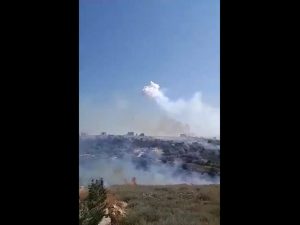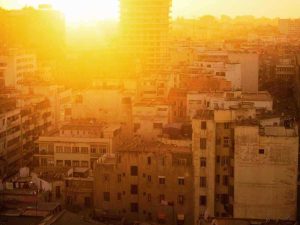Mining, big agribusiness, and the fossil fuel sectors have unleashed an astronomical spate of attacks on human rights defenders (HRDs) throughout 2023. Crucially, perpetrators linked to companies and projects in these sectors account for the majority of over 600 attacks across the course of the year.
This is according to a new damning report by the Business & Human Rights Resource Centre (BHRRC).
Staggering scale of attacks against human rights defenders
On Tuesday 7 May, the BHRRC published its annual briefing on attacks against HRDs.
Alarmingly, the data recorded 630 attacks which directly impacted an estimated 20,000 people. In particular, these were those involved in speaking out against business-related harms during 2023.
The BHRRC records multiple types of attacks against HRDs. It has most frequently recorded cases of judicial harassment (328), killings (87), physical violence (81), and intimidation or threats (80) throughout 2023.
Despite the staggering scale of attacks, the BHRRC impressed that these figures are just the tip of the iceberg. Crucially, this is because the data only reflects what is accessible through public sources of information. As such, the briefing noted that:
many attacks, especially non-lethal attacks (including death threats, judicial harassment and physical violence), never make it to media sources and there remains a significant gap in government monitoring of attacks, the problem is even more severe than these figures indicate. In addition, an “attack” may be against one person named in public sources or against a large number of unidentified people, such as an instance of charges being filed against 11,000 garment workers protesting for higher wages in Bangladesh. Thus, the number of individual HRDs experiencing attacks is higher than the number of attacks mentioned here.
Corporations driving attacks
Although attacks were recorded in almost every sector in 2023, certain extractive sectors stood out. Specifically, the BHRRC found that mining (165), agribusiness (117) and oil, gas & coal (112) were the most prolific sectors connected to attacks.
Of course, the briefing noted that the mining sector is a hotbed for allegations in part due to the drive to transition to greener technology.
For instance, a separate BHRRC report recently documented the soaring number of rights allegations tied to transition minerals in Eastern Europe and Central Asia.
Largely, companies did not directly perpetrate these attacks directly. Notably, state actors including the police and judicial systems, as well as the military carried out most of these attacks. However, allegations mentioned specific businesses in 50% of these cases. Moreover, as the report stated for instance:
Companies are often connected with attacks on HRDs, even when state actors are the direct perpetrator. This includes calling police or state security forces to disperse peaceful protests; cooperating with state repression, for example by providing services or products enabling surveillance; and obstructing unionisation. Other tactics used by companies to gain control over land and resources, often leading to conflict and attacks, include dividing communities and engaging in inadequate consultation processes.
As such, they have consistently been the most dangerous sectors since BHRRC began documenting these attacks in 2015. In tandem with this, these are of course the very sectors fueling the climate and biodiversity crises in the first place.
Indigenous defenders
Additionally, companies, states, and organised crime outfits perpetrated over three-quarters (78%) of these attacks against people taking action to protect the climate, environment and land rights.
Indigenous Peoples are particularly at risk when fighting for our planet. Since January 2015, the BHRRC has recorded more than 1,000 attacks against Indigenous defenders globally.
The majority of these – 93% – were raising concerns about harms to their lands and territories, our climate and/or the environment.
In 2023 alone, over a fifth of attacks (22%) were against Indigenous defenders. Indigenous defenders protect over 80% of the world’s remaining biodiversity. However, they comprise approximately 6% of the global population. Over three-quarters (78%) of these attacks against Indigenous defenders took place in Latin America, which has been one of the most dangerous regions for attacks against defenders consistently since 2015.
Voluntary action is “insufficient”
Co-head of the Business & Human Rights Resource Centre’s civic freedoms and human rights defender programme Christen Dobson said:
We have been documenting attacks against those speaking out about harmful business activities since 2015 – and every year are appalled at the continued violence against people protecting our rights and planet. Mining, agribusiness, and the fossil fuels sectors – those fuelling the planetary crisis – are yet again connected with the highest number of attacks against human rights and environmental defenders. Companies in these sectors must adopt and implement policy commitments to zero tolerance for attacks on defenders. These sectors also urgently need to shift their practice to prioritise a just transition to renewable energy grounded in respect for human rights, including Indigenous Peoples’ rights to self-determination and free, prior and informed consent. This includes the right to say no.
Many business actors are failing in their responsibility to respect human rights, resulting in harm to people and the environment, fuelling the triple planetary crisis we currently face. Listening to defenders is vital to understanding the risks and harms associated with business activity and to ensuring the transition to green economies is just and benefits workers, environmental defenders and their communities.
Moreover, Dobson noted that companies’ voluntary action is “insufficient”. As such he argued that:
there is an urgent need for robust mandatory human rights and environmental due diligence legislation, grounded in safe and effective stakeholder engagement and containing strong safeguards for human rights defenders. Governments must step in and fulfil their duty to protect the rights of defenders. One critical step is legally recognising and protecting Indigenous Peoples’ rights, including their rights to self- determination and to their lands, territories and resources.
Feature image via Youtube – Bloomberg Quicktake




